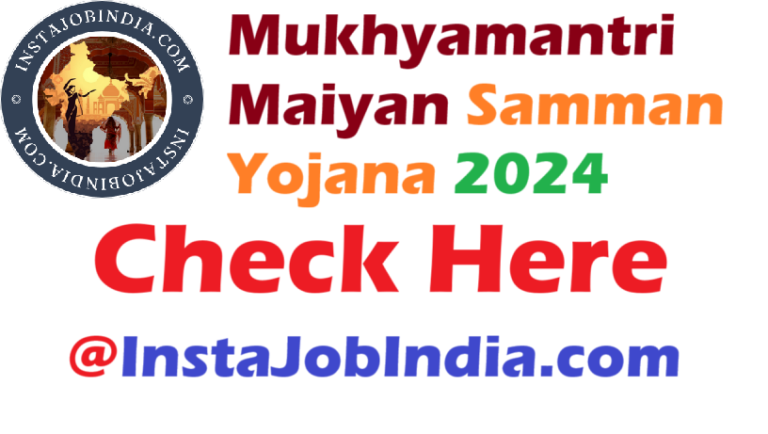Introduction to Pradhan Mantri Jan Dhan Yojana (PMJDY)
The Pradhan Mantri Jan Dhan Yojana (PMJDY) is a significant initiative launched by the Indian government to promote financial inclusion. Introduced on 15th August 2014 by Prime Minister Shri Narendra Modi, this scheme aims to ensure that every household in India has access to basic banking facilities. The core philosophy behind this initiative is “Sabka Sath Sabka Vikas,” which means “Together with All, Development for All.” This reflects the government’s commitment to inclusive growth and providing equal opportunities for all citizens.
Objectives of Pradhan Mantri Jan Dhan Yojana 2024
The main objectives of PMJDY are designed to cater to the needs of the unbanked and underprivileged sections of society. These objectives include:
- Opening Accounts for All: The scheme aims to provide universal access to banking facilities by opening accounts for all unbanked families.
- Access to Credit, Insurance, and Pension: PMJDY offers easy access to credit, insurance, and pension schemes to enhance financial security.
- Financial Literacy: The scheme promotes financial literacy through digital means, educating citizens about banking and financial services.
- Direct Benefit Transfer (DBT): By linking bank accounts with DBT, the scheme reduces leakages in subsidies and ensures efficient delivery of government benefits.
- Strengthening the Financial System: PMJDY strengthens the financial system by creating a robust payment infrastructure and a national identity system.
- Credit Guarantee Fund: The scheme includes a Credit Guarantee Fund to cover defaults in overdraft accounts, providing security to account holders.
- Micro-Insurance and Pension Schemes: PMJDY offers micro-insurance and pension schemes like the Pradhan Mantri Jeevan Bima Yojana (PMJBY) and the Atal Pension Yojana (APY), particularly targeting the unorganized sector.
Role of Technology in Financial Inclusion
Technology plays a crucial role in the success of PMJDY. The use of modern technologies like e-KYC, IMPS, AEPS, and Mobile Banking has made financial services more accessible and cost-effective. These technologies facilitate the following:
- Core Banking System (CBS): CBS enables seamless banking services like RTGS, NEFT, and mobile banking, making banking more user-friendly.
- Multi-Channel Approach: The scheme employs a multi-channel branchless approach, using devices like mobile phones and micro-ATMs to reach the masses.
- RuPay Debit Card: The RuPay debit card, provided through NCPI, offers cost savings and efficient transactions. It also ensures the security of customer information and provides customized product delivery.
Features of Pradhan Mantri Jan Dhan Yojana 2024
The PMJDY scheme offers several features to ensure comprehensive financial inclusion:
- Zero-Balance Account: Individuals can open a zero-balance account, removing barriers to banking for the underprivileged.
- Overdraft Facility: Eligible account holders linked with Aadhaar can avail of an overdraft benefit of up to Rs.10,000. The age limit for this benefit is 18-65 years.
- Insurance Cover: Account holders can access personal accident insurance cover of Rs.2 lakh, provided they open a RuPay debit card after 28.08.2018.
- Eligibility for Minors: Minors above 10 years can also open an account under the PMJDY scheme.
- Direct Benefit Transfer (DBT): The scheme enables account holders to receive benefits under various government schemes directly into their bank accounts.
- Integration with Other Schemes: The PMJDY accounts are linked with other schemes like Pradhan Mantri Jeevan Bima Yojana (PMJBY), Pradhan Mantri Suraksha Bima Yojana (PMSBY), and Micro Units Development and Refinance Agency Bank (MUDRA).
- Pension and Remittance Facilities: The scheme also offers pension schemes and remittance facilities, enhancing financial literacy and access to credit and insurance.
Challenges Faced by Pradhan Mantri Jan Dhan Yojana 2024
While the PMJDY scheme has been successful, it faces several challenges:
- Telecom Connectivity: Limited telecom connectivity in rural areas hampers access to digital banking services.
- Keeping Accounts Operative: Ensuring that all opened accounts remain active and in use is a significant challenge.
- Awareness of Benefits: Many potential beneficiaries are unaware of the scheme’s benefits, leading to underutilization.
- Commission on DBT: The commission on DBT transactions needs to be optimized to encourage more transactions.
- Coverage in Hill and Rural Areas: Extending the scheme’s benefits to remote and hilly areas remains a logistical challenge.
Achievements of Pradhan Mantri Jan Dhan Yojana 2024
Despite the challenges, the PMJDY scheme has achieved significant milestones:
- Account Openings: Since its launch, the scheme has seen a notable increase in the number of account openings, reaching 51.04 crores.
- Promotion of RuPay Card: The RuPay card’s benefits, such as cost savings and efficient transactions, have been widely promoted.
- Jan Dhan Darshan App: The introduction of the Jan Dhan Darshan App has made it easier for users to access their account information and services.
- Direct Benefit Transfer: The scheme has streamlined the process of DBT, making it more efficient and reducing leakages.
- Digital Transactions: PMJDY has significantly enhanced digital transactions, promoting a cashless economy.
- Micro-Credit Access: The scheme has improved access to micro-credit, including micro-investment and flexi recurring deposit options.
- Guinness World Record: The PMJDY scheme set a Guinness World Record by opening 18,096,130 new bank accounts between 23 and 29 August 2014.
- International Recognition: The scheme has received international recognition for its efforts in financial inclusion and poverty alleviation.
Frequently Asked Questions (FAQs)
Q1: What is the main objective of the Pradhan Mantri Jan Dhan Yojana?
A1: The main objective of PMJDY is to provide universal access to banking facilities and ensure financial inclusion for all, particularly targeting unbanked families.
Q2: What are the key features of the PMJDY scheme?
A2: Key features include zero-balance accounts, overdraft facilities, insurance cover, eligibility for minors, and integration with other government schemes like PMJBY and PMSBY.
Q3: How does technology support the PMJDY scheme?
A3: Technology supports PMJDY through e-KYC, IMPS, AEPS, and mobile banking, which make financial services accessible and cost-effective.
Q4: What are the challenges faced by the PMJDY scheme?
A4: Challenges include telecom connectivity issues, keeping accounts operative, awareness of benefits, commission on DBT, and coverage in rural and hilly areas.
Q5: How has the PMJDY scheme performed since its launch?
A5: The scheme has successfully opened over 51.04 crore accounts, promoted RuPay cards, introduced the Jan Dhan Darshan App, and improved digital transactions and access to micro-credit.
Q6: What is the age limit for the overdraft benefit under PMJDY?
A6: The age limit for the overdraft benefit under PMJDY is 18-65 years.
Q7: Can minors open an account under the PMJDY scheme?
A7: Yes, minors above 10 years of age can open an account under the PMJDY scheme.
Q8: What international recognition has the PMJDY scheme received?
A8: The PMJDY scheme has received international recognition for its efforts in financial inclusion and poverty alleviation, including a Guinness World Record for the number of accounts opened in a short period.
Conclusion
The Pradhan Mantri Jan Dhan Yojana is a transformative initiative that has significantly improved financial inclusion in India. By providing access to banking, credit, insurance, and pension schemes, it empowers the underprivileged sections of society. The use of technology has made these services more accessible and efficient. Despite facing challenges, the scheme’s achievements are commendable, making it a cornerstone of India’s financial inclusion efforts.

